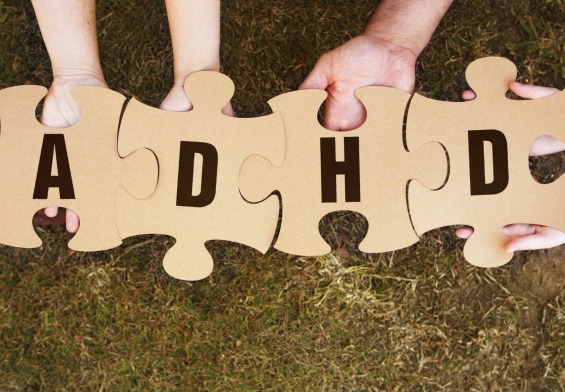Brainrot is a slang term used to describe the modern mental health phenomenon of the fatigue and burnout caused by consuming too much digital media.
It’s gained tons of online traction the past few years, but what does it really mean, and is it something to be concerned about?
Even though it’s a slang term, brainrot is a very real phenomenon, a touchpoint of today’s culture. It represents the mental exhaustion many people experience from excessive screen time and being constantly exposed to online content.
Scrolling through bad news (doomscrolling) or binging short form videos often causes that foggy, anxious, overstimulated feeling. That’s brainrot.
Let’s talk about what brainrot is, what causes it, how it’s connected to your mental health, and what you can do to stop it.
What Is Brainrot?
Brainrot is a slang term for the mental fatigue, emotional burnout, and cognitive overload that comes from too much negative content. It’s not a clinical term, but many people use it to describe the symptoms they experience.
How to Identify Brainrot
To determine if you’re experiencing brainrot, ask yourself a few questions:
- Do you feel mentally exhausted after prolonged internet use?
- Are you experiencing difficulty concentrating?
- Do you find yourself checking social media compulsively?
- Do you feel more anxious or irritable after online sessions?
The word “brainrot” first gained traction during the COVID-19 pandemic, when many people used the internet to connect with each other and distract themselves from outside stress.
What started as an innocuous coping mechanism has now spiraled into its own unhealthy habit for many.
If you feel like your brain is mush after hours online, that’s a symptom of brainrot.
How Are Brainrot and Doomscrolling Related?
Doomscrolling is the act of endlessly scrolling through bad news or emotionally intense content, often out of habit or anxiety.
They’re not exactly the same, but doomscrolling and brainrot go hand in hand:
- It reinforces negative emotional patterns.
- It keeps the brain in a hyper-aroused, overstimulated state.
- It becomes compulsive—even when it doesn’t feel good.
How To Recognize and Stop Doomscrolling
1. Awareness Stage
- Install a screen time tracking app
- Keep a journal of your digital usage
- Identify your most common negative content triggers
2. Boundary Setting Stage
- Set strict daily time limits for social media and news
- Use app blockers during work or personal time
- Find some positive content to replace it with
3. Habit Transformation Stage
- Develop offline hobbies and interests
- Practice mindfulness or meditation
- Increase face-to-face social interactions
Numerous studies associate doomscrolling with increased anxiety and disrupted sleep. Some people also develop a tendency to keep seeking out negative content just to maintain a sense of control.
Your brain gets hooked on the dopamine hits that come from each swipe. Even if the content makes you feel bad, it’s like junk food.
What Are the Mental Health Effects of Brainrot?
Brainrot isn’t just an abstract feeling. It’s backed by data on how internet addiction and negative media exposure affect mental health. Here’s how it shows up:
Anxiety and Depression
Research shows a strong correlation between excessive internet use and symptoms of anxiety and depression.
- One meta-analysis found a significant link between Internet Addiction Disorder (IAD) and depression/anxiety.
- According to the Compensatory Internet Use Theory, people often turn to the internet to escape negative emotions. But avoiding them like this makes those emotions worse over time.
This means brainrot creates a vicious cycle. Stress drives screen time, and that screen time creates more stress.
Sleep Problems
Doomscrolling and late-night phone use can destroy sleep quality:
- Screens suppress melatonin, a hormone critical to sleep.
- Constant media exposure keeps the brain stimulated and alert.
- This leads to chronic sleep disruption over time. Poorer sleep leads to more stress, which leads to more doomscrolling.
Practical Sleep Hygiene Strategies
- Try not to use any screens 1–2 hours before bed
- Use blue light filters on devices
- Create a relaxing bedtime routine
- Keep electronic devices out of the bedroom
- Keep a consistent sleep schedule
Impaired Attention and Focus
Brainrot often feels like your attention span has vanished. While formal research is ongoing, many people report difficulty concentrating, maintaining focus, or completing tasks after long stretches of media multitasking or scrolling.
Constantly switching between tabs, videos, and apps conditions the mind for shallow engagement and distractibility.
Emotional Dysregulation and Social Withdrawal
When you’re always online, emotional responses can become blunted or exaggerated:
- Negative content can fuel hopelessness, fear, and even obsessive thoughts.
- Some people report increased irritability, emotional numbness, or OCD-like symptoms after extended scrolling.
- Many experience social withdrawal, preferring online interaction over real-life connection.
Is Brainrot a Form of Internet Addiction?
Not exactly, but there is a lot of overlap between the two.
Psychological literature recognizes Problematic Social Media Use (PSMU) as a behavioral addiction. Signs include:
- Obsessive engagement with online content
- Loss of control over time spent online
- Withdrawal symptoms (e.g., irritability, anxiety)
- Negative impact on real-world responsibilities and relationships
Brainrot isn’t formally defined in the DSM-5, but it shares traits with recognized behavioral disorders like IAD and PSMU. It affects mental health, attention, and emotional well-being in many of the same ways.
Why Are Young People More Vulnerable?
Teens and young adults are the most likely to experience brainrot for several reasons:
- Their brains are still developing, especially in areas tied to impulse control and emotional regulation.
- They’ve had lifelong exposure to smartphones, social media, and other screen-based tech.
- Social comparison, fear of missing out (FOMO), and nonstop content all amplify emotional stress and compulsive behavior.
These factors make younger audiences more prone to compulsive scrolling and the symptoms that follow.
How to Stop Brainrot
1. Start With Awareness
The first step is noticing the behavior. Pay attention to how often you reach for your phone, and how you feel afterward.
Ask yourself: Are you using it out of boredom, stress, or habit?
2. Set Boundaries Around Screen Time
Use app timers, screen time trackers, or app blockers.
Try these techniques:
- Set realistic goals for screen use
- Create phone-free zones
- Use your phone only during scheduled breaks
- Avoid screens during meals and 1 hour before bed
- Try “low-dopamine mornings” by staying offline for 30–60 minutes after waking up
3. Practice Mindful Scrolling
Don’t just scroll aimlessly. Set a reason or intention before opening any app, whether that’s to learn something, relax, or connect.
4. Curate What You Consume
If your feeds are full of fear-driven headlines or toxic content, it’s time to clean them up.
Unfollow or mute negative sources and follow creators who share balanced, meaningful, or uplifting material.
5. Replace Doomscrolling with Real-World Habits
Try activities that keep your hands and mind occupied:
- Go for a walk
- Read a physical book
- Call a friend
- Journal or draw
- Cook something new
Even 10–15 minutes offline can refresh your mental state.
6. Seek Help If You Need It
If symptoms like anxiety, insomnia, or social withdrawal persist, reach out to a licensed therapist.
Depression and anxiety therapists trained in digital wellness or CBT can help you rewire unhealthy patterns and regain control.
Brainrot and Anxiety FAQs
What causes brainrot?
Prolonged exposure to repetitive, negative, or meaningless content can cause brainrot. Doomscrolling and excessive social media use are common contributors.
Is brainrot a real condition?
While it’s not an official clinical diagnosis, brainrot reflects a real cognitive and emotional challenge tied to digital overload.
Can brainrot be reversed?
Yes. With lifestyle changes like screen boundaries, content curation, and mindfulness, brainrot can be significantly improved.
Reclaiming Your Mental Space
Brainrot has become more than just an internet meme. It’s a real reflection of how overwhelmed and overstimulated many of us feel in today’s digital world.
The good news? You don’t need to quit the internet to feel better. By becoming more mindful about how you engage with digital content, you can reclaim your mental clarity, focus, and emotional well-being.
Resources:
https://www.uhhospitals.org/blog/articles/2024/07/doomscrolling-breaking-the-habit
Sun Y, Wang Z and Liu T (2025) Association of Internet addiction with psychiatric symptom levels and sleep disorders: a systematic review and meta-analysis. Front. Psychol. 16:1573058. doi: 10.3389/fpsyg.2025.1573058
https://www.newportinstitute.com/resources/co-occurring-disorders/brain-rot/



